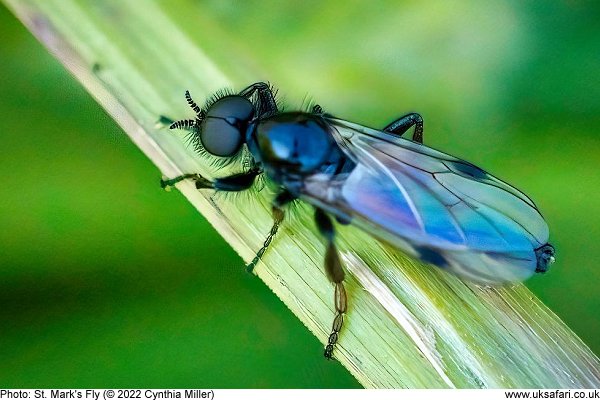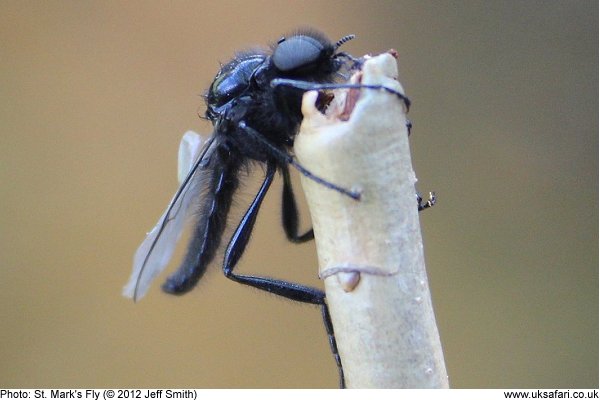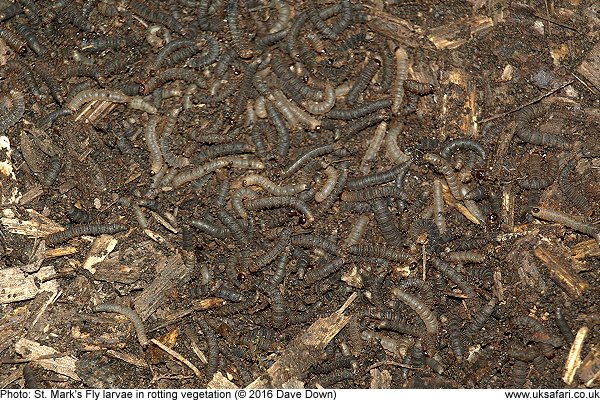 Quick Facts
Quick Facts
Scientific name: Biblio marci
Size: Males are about 12mm long, and the females are around 14mm long
Distribution: Found throughout the U.K.
Months seen: April to June. These hairy little insects are named after St. Marks day, 25th April, when they appear with amazing regularity. They often all disappear after just a fortnight
Habitat: Hedgerows, gardens, woodland edges and fields
Food: Nectar.
Special features: St. Mark's flies fly in a sluggish manner above hedgerows and grass, with their long legs dangling down. Adult flies help with the pollination of fruit trees, while their larvae feed on leaf mould.
 Related Pages
Related Pages

 Popular Pages
Popular Pages
Amphibians, Bats, Badgers, Beetles, Birds, Birds of Prey, Bumble Bees, Butterflies, Caterpillars, Creepy-Crawlies, Deadly Spiders, Dolphins, Dragonflies, E-Postcards, False Widow Spiders, Free Newsletter, Frogs, Fungi, Garden Spiders, Glow-Worms, Grey Squirrels, Hedgehogs, House Spiders, Ladybirds, Mammals, Marine Mammals, Moths, Owls, Reptiles, Spiders, Toads, Trees, Wildlife Hospitals
Copyright © 2022 G. Bradley UK Safari. All rights reserved | About Us | Links | Contributors


 St. Mark's Flies
St. Mark's Flies




